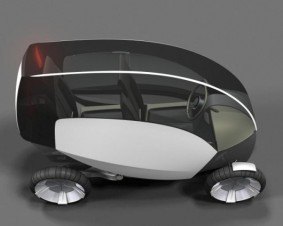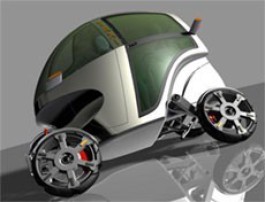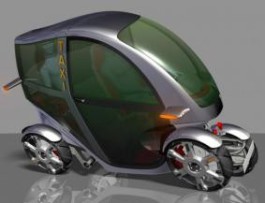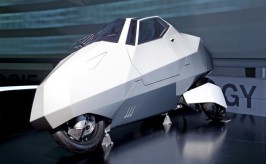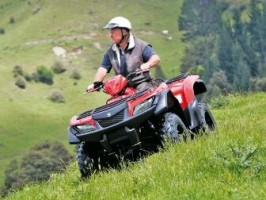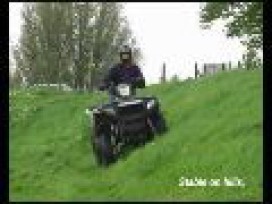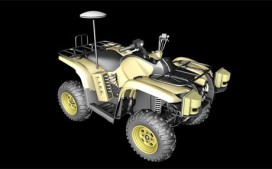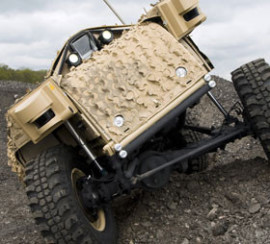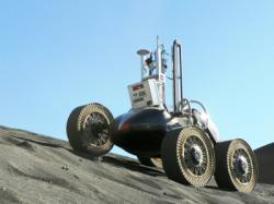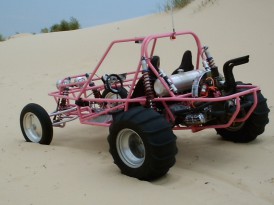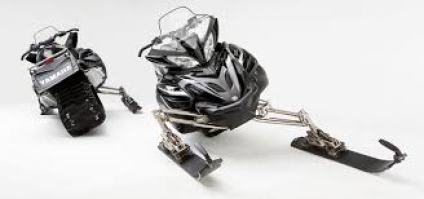Project 001 IPDI solutions
'Success is achieved and may be measured by doing the right things, not just doing things right.'
The solutions offered are ‘white label’ or 'unbranded' , universal specification, platform, enabling technology to allow lower whole-life carbon and other emissions than any other fully enclosed, fully powered vehicle with more than two wheels. They allow various space-efficient configurations, with some common components, within the optimum 2.4m (95in) long x 0.85m (33in) wide x 1.5m (59in) high package size urban vehicle;
A. 3 wheels, 1 front, 3 wheels tilting (3W1F3T) ‘delta’ trike 1+1 seater fully enclosed.
B. 4 wheels, 2 front, 4 wheels tilting (4W2F4T) automobile or quadbike or quadricycle 1+1 seater fully enclosed.
C. 3 wheels, 2 front, 3 wheels tilting (3W2F3T) ‘tadpole’ trike 1 seater fully enclosed.
D. 3 wheels, 2 front, 3 wheels tilting (3W2F3T) ‘tadpole’ trike 1+1 seater fully enclosed.
1. Three wheel versions qualify as a Class III motor tricycle vehicle, can be driven on a motorcycle or car licence, including in the USA, without a helmet and are exempt from Euro NCAP and US NCAP crash testing requirement.
2. Four wheel versions can qualify as an L5e, L6e or L7e quadricycle in Europe, can be driven on a motorcycle or car licence without a helmet and are exempt from NCAP crash testing requirement. Four wheel can also qualify as an M1 vehicle, which does need to be crash tested.
3. A maximum 5hp 45 km/h vehicle could be driven by 16 year olds without a driving licence in certain European countries.
The technology will be used as commuter, taxi, courier, delivery, utilities repair, maintenance, paramedic, doctor, police, emergency services, highways and roadside assistance vehicles to reduce travelling times door to door and increase parking efficiency.
Other advantages to this type of vehicle are:
- Increased safety at junctions as there is no hood/bonnet projecting in front of the driver restricting their view.
- Increased pedestrian and cyclist safety than an automobile due to the rounded front end and smaller frontal area.
- Shorter and more controlled stopping distances under braking are possible than with motorcycles or automobiles because of low vehicle mass to large ground contact ratios.
- Vehicle steering and control is intuitive, low skill and by familiar means.
- Minimisation of 'road rage' with easier, quicker journeys.
- Increased probability of parking in close proximity to dwelliing or delivery point in urban area than with auto.
- Because of the very small frontal area compared with conventional automobiles, and by careful design, low aerodynamic coefficient of drag (Cd) is possible. Cd of 0.19 to 0.21 is estimated for IPDI technology vehicle. BMW have achieved 0.18 Cd. Conventional seating road autos are usually above 0.30 Cd.
Drag Coefficient Area (Cd A) comparison estimate v other aerodynamically efficient vehicles;
|
Cd A |
Cd |
Automobile model |
|
0.232 m2 (2.50 sq ft) |
|
|
|
0.250 m2 (2.69 sq ft) |
|
2009 Loremo
|
|
0.279 m2 (3.00 sq ft) |
0.186 |
2011 Volkswagen XL1
|
|
0.244 m2 |
0.195 |
2009 Volkswagen L1
|
|
0.208 m2 |
0.159 |
2002 Volkswagen L1 |
|
0.231 m2 |
0.210 |
2021 IPDI (if Cd is 0.210) |
|
0.209 m2 |
0.190 |
2021 IPDI (if Cd is 0.190) |
|
0.176 m2 |
0.160 |
2021 IPDI (if Cd is 0.160)
|
(Click on images to weblink)
In addtion to road vehicles, there are various other vehicle types that the technology platform lends itself to. The wheel axis/wheel drivepoints are independently suspended, giving better rough terrain ground contact than with 'common axle' All Terrain Vehicles (ATV) quadbikes, which have a less predictable centre of gravity. Agricultural vehicles, Unmanned Ground Vehicles (UGVs), high speed personnel vehicles or for rescue and injured personnel recovery are other possible applications. The compound advantages are that this higher efficiency means of technology-enabled transport are that it can be safer, more stable, can go faster, or have longer range than it's more conventional counterparts on the same fuel or power resource.

